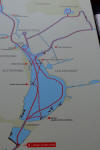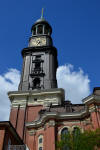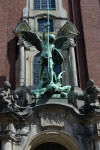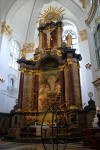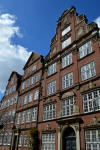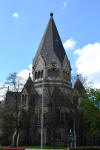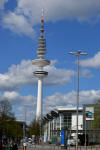Round The World and other travels
A frequent flyer's collection of trip diaries
May 2016: Hamburg
Hamburg, with a population of around 1.8 million, is Germany's second largest city. In former times a sovereign state in its own right, the modern city is in the relatively unusual position of sitting alongside the likes of Bavaria and Saxony as one of the Bundesländer (German federal states). Hamburg vies with Antwerp for the position of Europe's second busiest cargo port, Rotterdam being the undisputed leader. Hamburg's old warehouse district was declared a UNESCO World Heritage Site in July 2015.
 I
first passed through the city in 1979 and followed this up with a
short visit in 1982. I recall telling people afterwards that this was
one of Europe's most underrated destinations. "Where else can you
see people yachting right in the centre of the city?", I would ask.
"Did you know that Hamburg has more bridges than Amsterdam, Venice
and London combined?" Yet for
some reason I never returned in the decades that followed. I finally
got around to bringing my memories up-to-date in May 2016, flying
direct from Edinburgh with easyJet. The overall impression that I
was left with on this occasion was how affluent and (for the most
part) tidy it all
looked, compared to the city I remembered from the eighties.
I
first passed through the city in 1979 and followed this up with a
short visit in 1982. I recall telling people afterwards that this was
one of Europe's most underrated destinations. "Where else can you
see people yachting right in the centre of the city?", I would ask.
"Did you know that Hamburg has more bridges than Amsterdam, Venice
and London combined?" Yet for
some reason I never returned in the decades that followed. I finally
got around to bringing my memories up-to-date in May 2016, flying
direct from Edinburgh with easyJet. The overall impression that I
was left with on this occasion was how affluent and (for the most
part) tidy it all
looked, compared to the city I remembered from the eighties.
City Centre
For the purpose of this report, I am taking the city centre to mean the area west of the main station and north of Steinstraße / Domstraße, together with a few blocks on the eastern side of the station. Highlights include the impressive City Hall and its adjoining market square (Rathausmarkt), Mönckebergstraße (home of the big department stores and St Peter's Church), and the attractive southeastern and southwestern shores of the Binnenalster lake.
 |
 |
 |
 |
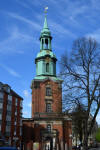 |
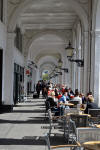 |
 |
 |
 |
 |
||
| ABOVE and ABOVE-RIGHT: Hamburg's main city centre area |
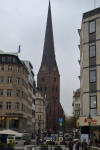 |
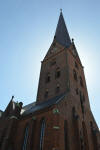 |
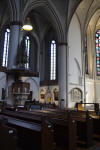 |
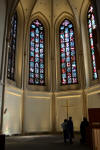 |
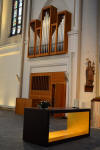 |
| RIGHT: Focus on St Peter's Church |
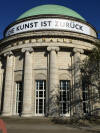 "The art is back" |
 |
 |
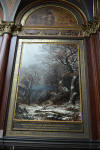 |
 |
 |
Art Gallery
Hamburg's main art gallery, the Kunsthalle, had only just been reopened at the time of my visit, following extensive renovation. It was advertising its return using the slogan 'The art is back'. The complex of three connected buildings is situated between the city's main railway station and the narrow strip of land separating the two Alster lakes.
Altstadt, Speicherstadt, HafenCity & Kontorhausviertel
Hamburg's old town lies directly south of the modern city centre, across Steinstraße / Domstraße. Highlights include the Mahnmal St. Nikolai (a memorial to World War II, which occupies the remains of a bombed church) and St Katharine's Church, one of the city's five Lutheran Hauptkirchen.
 |
 |
 |
 |
 |
 |
| LEFT to RIGHT: 1 (End of Domstraße), 2 & 3 (St Nikolai WWII memorial), 4-6 (St Katharine's Church) | |||||
At the heart of Hamburg's World Heritage Site is the Speicherstadt old warehouse district. Adjacent to the mass of brick-built warehouses lies the more modern HafenCity, containing the fabulous new Elbphilharmonie concert hall. I visited this area twice during my week in Germany, in very different weather conditions - no prizes for being able to tell which pictures are which!
 |
 |
 |
 |
 |
 |
 |
 |
 |
 |
 |
 |
 |
 |
 |
 |
 |
 |
 |
 |
 |
 |
The final component of Hamburg's World Heritage Site is the Kontorhausviertel, and in particular the Chilehaus building. The latter dates from 1924 and its design is thought to have been inspired by shipping.
Blankenese
Situated on the right bank of the Elbe and west of the city centre, this former fishing village turned affluent suburb is one of the most picturesque spots in town. People are attracted by the narrow and winding streets set into the hillside, the highly desirable houses and the charming overall feel of the place.
 |
 |
 |
 |
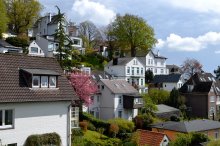 |
 |
 |
 |
 |
The slow-moving Alster river, a tributary of the Elbe, has formed two substantial lakes in the centre of Hamburg, known as the Inner Alster (Binnenalster) and Outer Alster (Außenalster). I took an enjoyable one-way lake cruise on my second morning in the city, leaving from Jungfernstieg (adjacent to one corner of the Rathausplatz) and zig-zagging northwards to the prosperous-looking district of Winterhude. I have clear memories of similar journeys being possible in the early 1980s on public waterbuses that were fully integrated into the wider transport network. I would later find out that these services had been shut down in 1984 due to heavy losses, with a tourist-orientated replacement appearing three years later. In any event, I thoroughly enjoyed spending an hour or so of 2016 on the modern excursion boat, in glorious weather conditions.
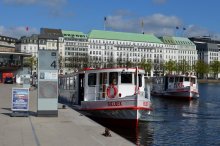 |
 |
 |
 |
 |
|
 |
 |
 |
 |
||
 |
 |
 |
 |
 |
 |
From Landungsbrücken to Stephansplatz
While Hamburg is well known for its waterways, it also has its fair share of parkland. A glance at the map reveals a broad strip of green running northeastwards from the Landungsbrücken area of the harbour before gently curving round to form the division between the two Alster lakes. After visiting the Old Elbe Tunnel (see column on right), I spent a rewarding couple of hours walking this route back to the city centre, starting off with the Michelwiese (another park), the Hauptkirche St Michaelis, and the Composers' Quarter.
Old Elbe Tunnel
The Alter Elbtunnel (or St Pauli Elbtunnel) was opened in 1911 and was featured to great effect in the movie version of the Frederick Forsyth novel The Odessa File. I walked through it and back for the first time during this visit to Hamburg, pausing briefly at the southern end to take in the views back across the river to the Landungsbrücken (literally 'landing bridges') on the St Pauli side.
Base: Reichshof (Curio Collection by Hilton)
Linked reports from same trip:
